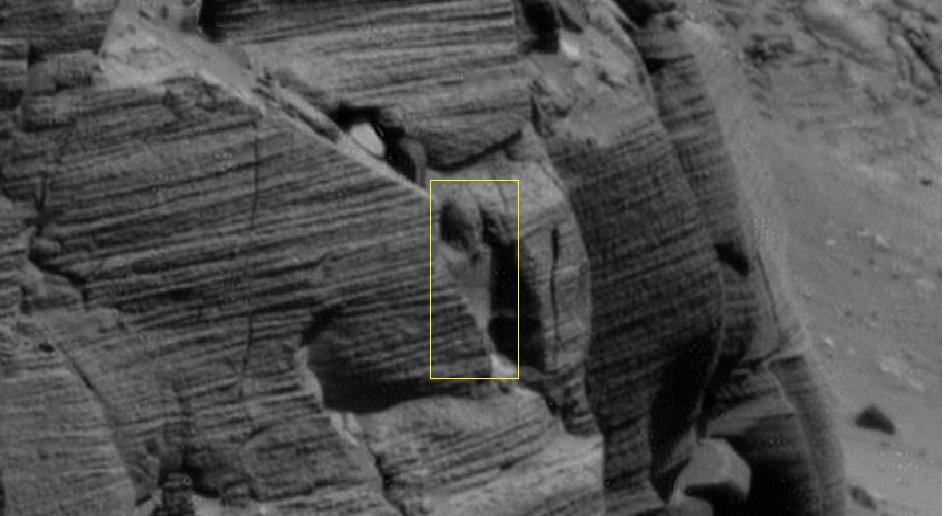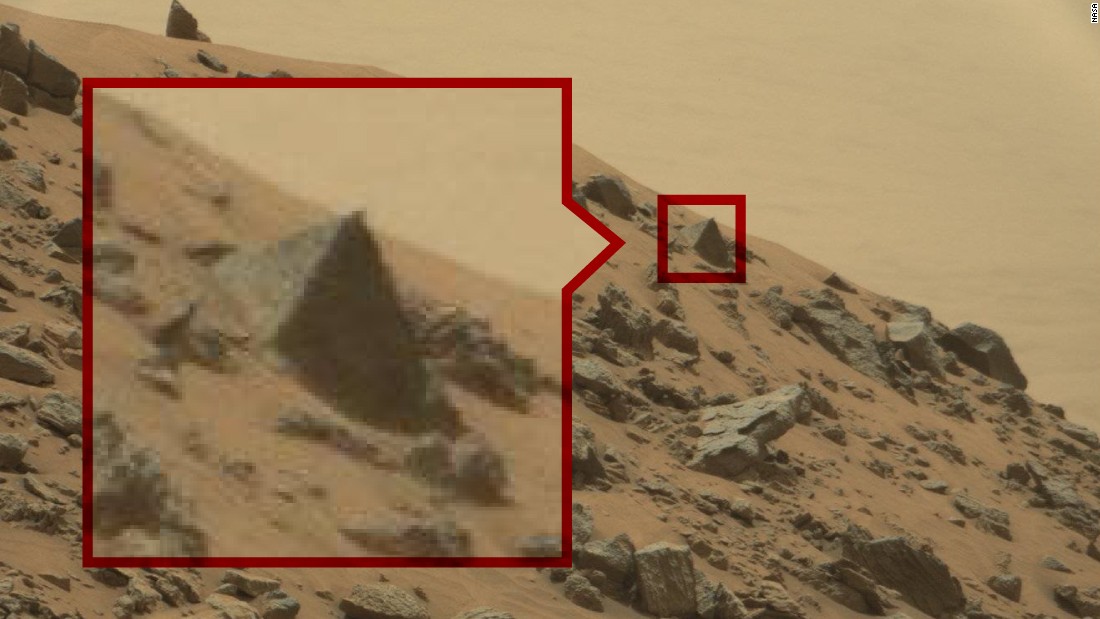NASA's Mars Curiosity rover finds building blocks for life
Source: Houston Chronicle
Martian geologist Kirsten Siebach has always been skeptical about NASA's chances of finding life on the Red Planet, but two recent discoveries by the Curiosity rover have made her hopeful.
"Even if life existed [on Mars], we have way better resources of finding ancient life on Earth and it's still hard to find," said Siebach, a Rice professor and scientists working in the Mars Science Laboratory at NASA's Jet Propulsion Laboratory. "But we know that it can now be found."
Those discoveries, announced this afternoon by NASA, show that Mars is not dead despite previous hypotheses and that signs of ancient life can be preserved. They join a now-extensive list of findings that hint at life on the Red Planet made by Curiosity since it landed in August 2012.. .
Read more: https://www.chron.com/news/nation-world/space/article/NASA-s-Mars-Curiosity-rover-makes-new-discovery-12968501.php?cmpid=moengage
Amazing.
turbinetree
(24,703 posts)exboyfil
(17,863 posts)Three times longer than planned because these durable little rovers really kick butt. Also you have to hand it to the scientists and engineers that keep them going by improvising work arounds to hardware and software issues. The fact that the solar panels have been kept clear enough during this time is truly amazing.
lagomorph777
(30,613 posts)The methane seasonal variation is a great example.
The Voyager probes are another, now exploring interstellar space, decades after their launch.
Judi Lynn
(160,545 posts)By Mike Wall, Space.com Senior Writer | June 7, 2018 02:01pm ET
If you're holding out hope that Mars may have once been an inhabited world, two new studies should put a little spring in your step.
NASA's Mars rover Curiosity has identified a variety of organic molecules, the carbon-based building blocks of life as we know it, in 3.5-billion-year-old Red Planet rocks, one of the papers reports.
"These results do not give us any evidence of life," stressed study lead author Jennifer Eigenbrode, a scientist at the Solar System Exploration Division at NASA's Goddard Space Flight Center in Greenbelt, Maryland. [The Search for Life on Mars: A Photo Timeline]
"But there is a possibility that [the organics] are from an ancient life source; we just don't know," Eigenbrode told Space.com. "And even if life was never around, they [the molecules] tell us there was at least something around for organisms to eat."
More:
https://www.space.com/40819-mars-methane-organics-curiosity-rover.html
Baclava
(12,047 posts)Astronomers discover complex organic matter exists throughout the universe
Astronomers report in the journal Nature that organic compounds of unexpected complexity exist throughout the Universe. The results suggest that complex organic compounds are not the sole domain of life but can be made naturally by stars.
Not only are stars producing this complex organic matter, they are also ejecting it into the general interstellar space, the region between stars.
https://www.sciencedaily.com/releases/2011/10/111026143721.htm
jberryhill
(62,444 posts)Well, duh, of course.
That's why they got all them pyramids and statues and stuff on Mars:




I thought they had some news of some kind. We've known about these signs of ancient life for YEARS!
Judi Lynn
(160,545 posts)‘There’s been lots of excitement. Could this methane be produced biologically? Could it be produced by subsurface microbes?’
By Alessandra Potenza@ale_potenza Jun 7, 2018, 2:00pm EDT
NASA’s Curiosity rover has detected background levels of methane in the atmosphere of Mars, and these concentrations seem to go up in the summer and down in the winter, according to new research. Where the methane is coming from is still a mystery, but scientists have some ideas, including that microbes may be the source of the gas.
Researchers at NASA and other US universities analyzed five years’ worth of methane measurements Curiosity took at Gale Crater, where the rover landed in 2012. Curiosity detected background levels of methane of about 0.4 parts per billion, which is a tiny amount. (In comparison, Earth’s atmosphere has about 1,800 parts per billion of methane.) Those levels of methane, however, were found to range from 0.2 to about 0.7 parts per billion, with concentrations peaking near the end of the summer in the northern hemisphere, according to a study published today in Science. This seasonal cycle repeated through time and could come from an underground reservoir of methane, the study says. Whether that reservoir is a sign that there is or was life on Mars, however, is impossible to say for now.
Methane had been detected before on the Red Planet, but the measurements were all over the place. In 2003, for instance, telescopes from Earth mapped plumes of methane of about 45 parts per billion on Mars. Other measurements were taken by spacecraft orbiting the planet. And then in 2013 and 2014, Curiosity detected plumes of methane of 7 parts per billion. Today’s study is the first one to show that methane in the Martian air seems to follow a pattern: it has a seasonal cycle, and it’s not just random. That is key for finally understanding where this methane is coming from, and whether it’s a sign that there’s life on our neighboring planet.
“Most humans, as we crawled down from trees, have wondered about, ‘Are we alone? Are we the only life form?’” says Mike Mumma, a planetary scientist at NASA’s Goddard Space Flight Center, who’s studied methane on Mars and was not part of today’s research. “If we can identify whether on Mars this methane has originated from life, that would be one way of answering that question.”
More:
https://www.theverge.com/2018/6/7/17434718/nasa-curiosity-rover-mars-methane-seasonal-cycle-microbes-life
mahatmakanejeeves
(57,512 posts)sdfernando
(4,935 posts)It may destroy such life in favor of its new matrix.
Baclava
(12,047 posts)Just like our alien overlord creators commanded.
yea verily
All your worlds are belong to us
MineralMan
(146,317 posts)They're an unending, never-failing resource of human seed...
![]()
sdfernando
(4,935 posts)Well, I think I'll just leave it at that.
Baclava
(12,047 posts)The Belters are the wave of the future
Coventina
(27,121 posts)I think I might have release a sentient hummus-based life-form into the sewers this morning.
Hopefully, they'll be vegetarians....
![]()
lagomorph777
(30,613 posts)If we contaminate worlds that might have their own life, it becomes vastly more difficult to prove that the life we find out there isn't us.
sdfernando
(4,935 posts)are assembled in clean rooms......Oh dog!! I just had a horrible thought....Pence placed his hand on one of those things and contaminated it. I can't imagine a world full of Pences! UGH!
lagomorph777
(30,613 posts)And the rest of us worry about RePutin contamination.
jpak
(41,758 posts)here on Earth.
It's the "smell of the ocean" and newly mowed lawns
It's major source of organic carbon for marine prokaryotes that dominate life in the ocean.
These are NOT building blocks - they are metabolic products released from living organisms.
Methanethiol is a (photo)degradation product of dimethylsulfide and is deposited in glacial ice.
It's use as a proxy to track ancient variations in marine photosynthesis (primary production) in glacial ice cores.
This is A Big Fucking Deal